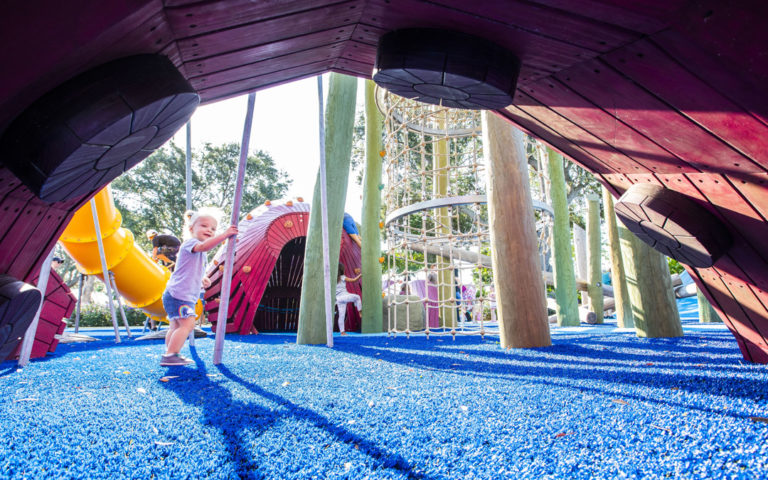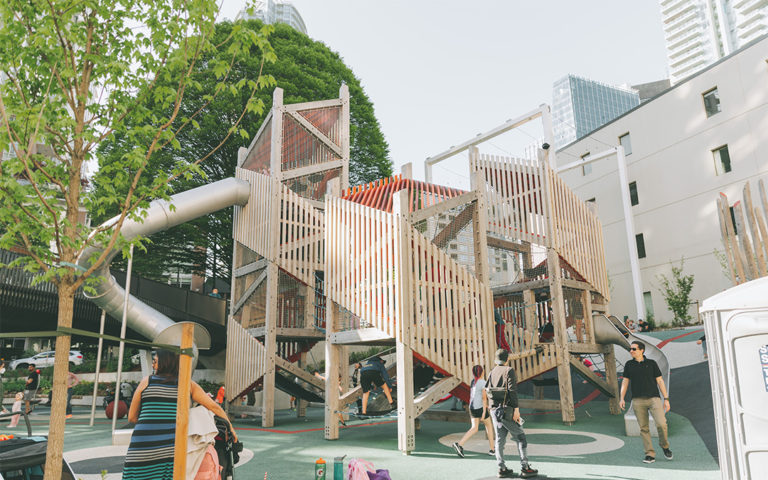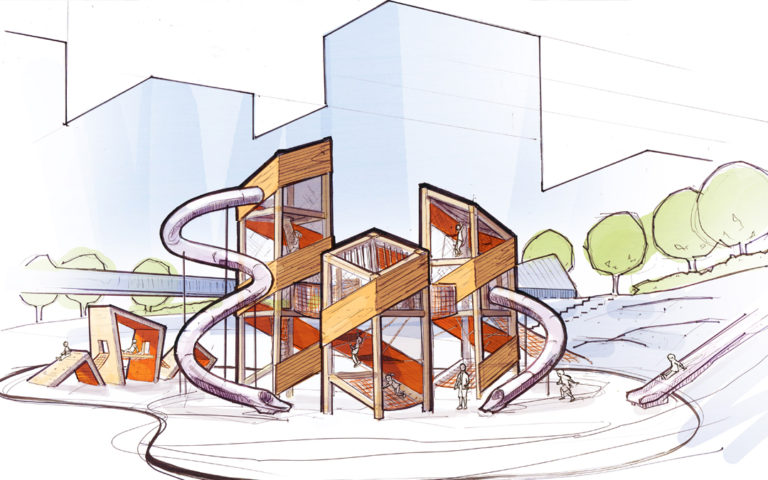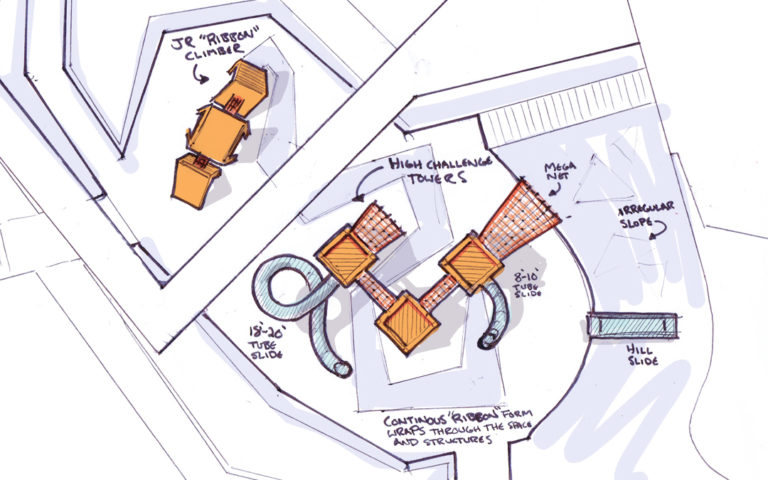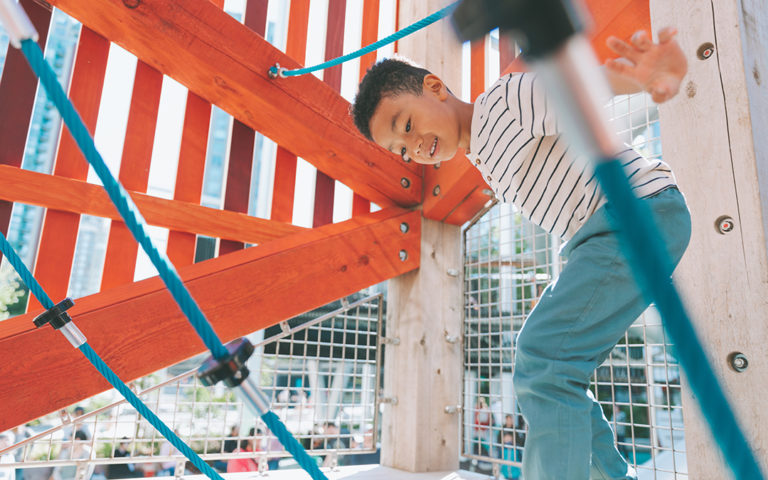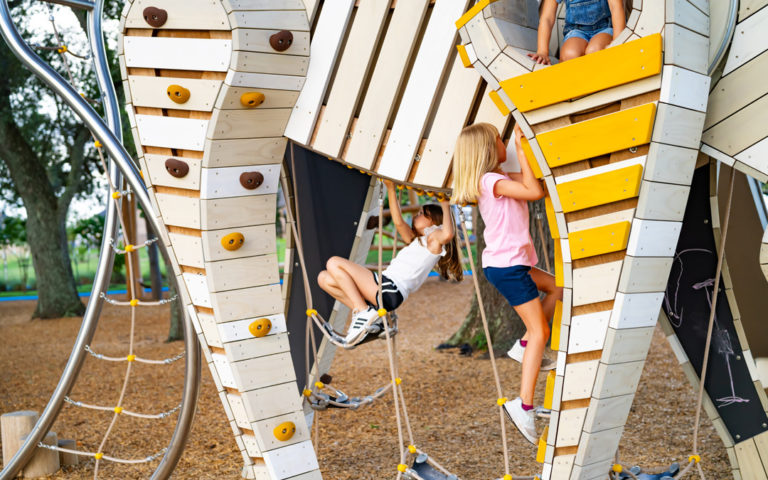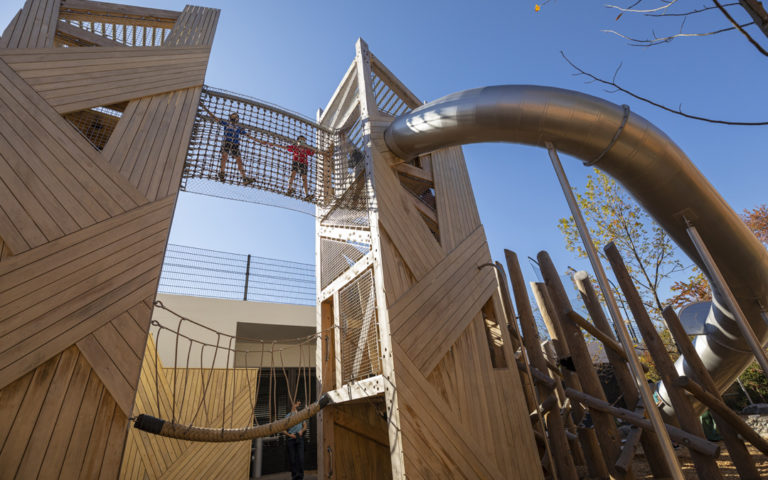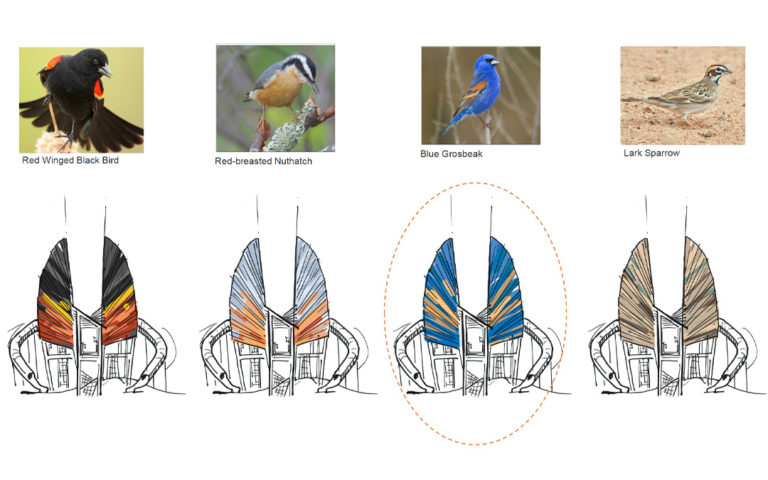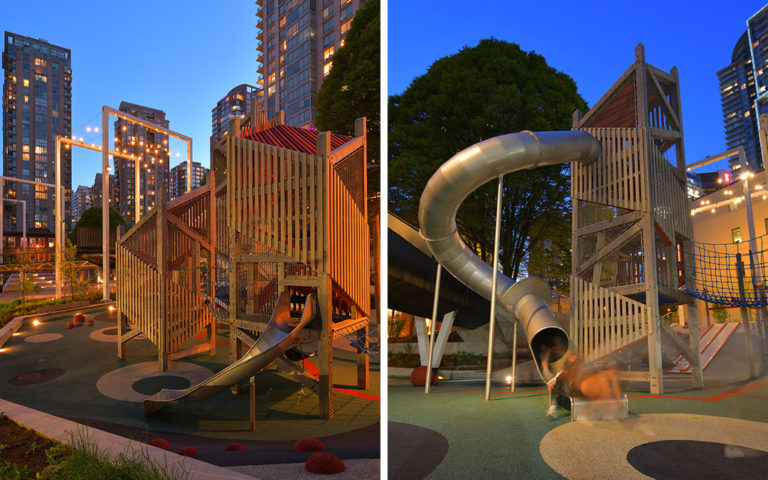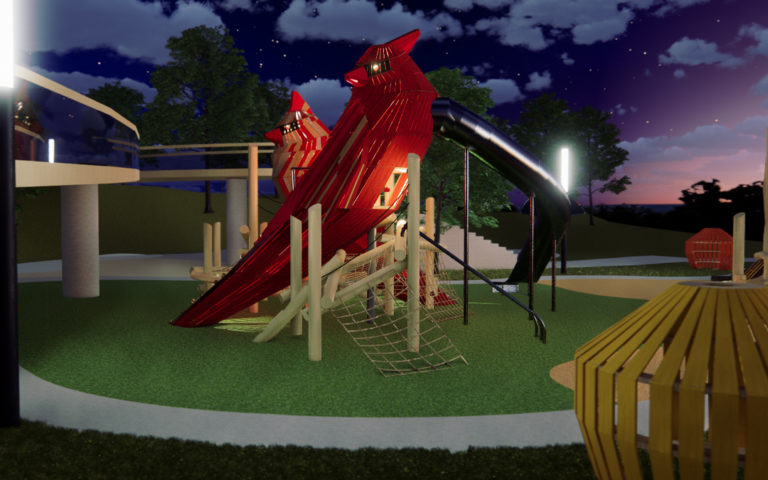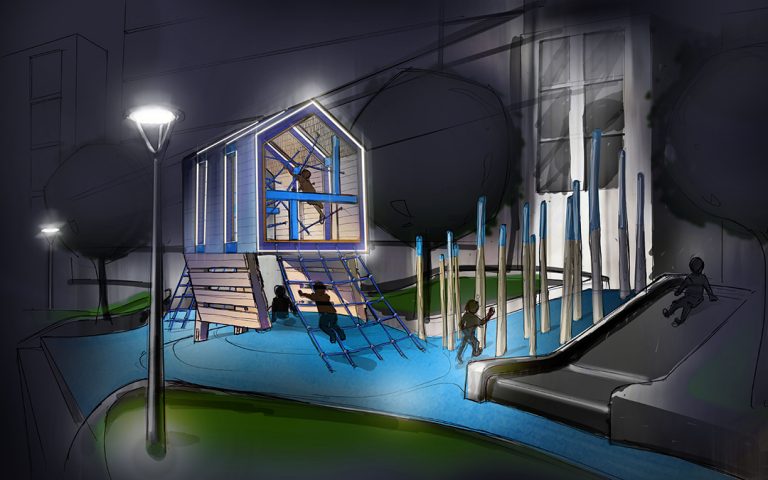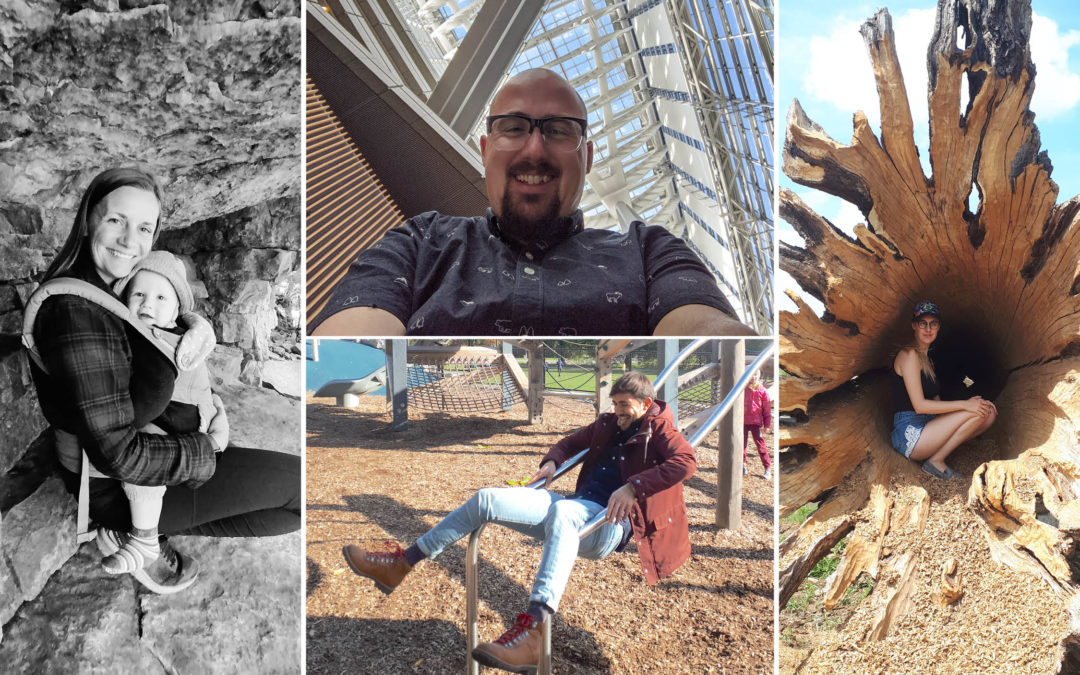
Approaching Playground Design: 4 Perspectives
Earthscape’s design team has a wide variety of academic backgrounds. Four designers, trained in industrial design, architecture and interior design share their thoughts on how their training influences their approach to playground design.
How does your training or background influence your approach to playground design?
Janelle (left): My background is in interior design, where anthropometrics is a crucial component of every detail. I always try to think about how a child experiences both the entire play environment and each individual play structure from their vantage point – the relationship of scale is so different when you’re in a smaller body. If you sit on the ground and look around, you’ll quickly see what I mean. I often try to imagine; how would I perceive this space if I was 3 or 4 feet tall? What details would stand out that I may overlook as a much taller person?
Carlin (right): I am an industrial designer. In school, we focused a lot on the end product user and creating a pleasing experience. The end-user is so important in playground design. Our paying client may be a city, school, or developer, but the users are children and families! Thinking about how children might approach the space or use the playground is always at the forefront of my mind. What will they see when they enter? What kind of wild ideas and scenarios will they manifest? How will they play?
Secondary to the children are caregivers or guardians. What do they see? How can they interact with their child in the play space? Where can they rest?
Ross (top): My training is in architecture so I view a playground design as a piece of architecture. How can a playground be a place maker? How does it integrate with its surroundings? Is it fun for the target audience, but also engaging for caregivers, family, and anyone else that might visit?
I like to dig into, and research, the local area to discover its history, contexts, and interesting facts. These are all elements that can help to develop initial concepts, inform the overall design, and better integrate the playground into its new home.
Ismael (bottom): I am an industrial designer, so I like to look at playground design from a product design point of view. The play structure sets the tone but I like to think about the look and feel of an entire space. Prior to joining Earthscape, I worked on projects that were at a much smaller scale. Looking at the topography, surfacing, safety regulations, and details, while not losing sight of the original design intent, was a big challenge for me at the beginning.
What challenges you are confronted with as a playground designer?
Ross: As a member of both the design and engineering teams one of the most significant challenges I’m confronted with is how to balance each of those roles. As a designer, I want to push the limits of what our materials and designs can do; make it bigger, more exciting, more novel. As an engineer, there can be a drive to want the opposite; simple, constructable, reliable. Discovering those designs that satisfy both sides of the equation is as challenging as it is rewarding.
Carlin: In playground design, there are many considerations: safety, accessibility, constructability, pricing…the list can go on and on. Embracing these constraints and not letting them define how or what you design can be very challenging. Sometimes it feels like a giant Venn diagram; in the middle, there is this sweet spot where your final design sits. Getting there takes many revisions and the removal of bad ideas, but the design is a process. Trust the process.
Ismael: For me, one of the biggest challenges in design is the need to continuously zoom in and out on a project; looking at the bigger picture, while taking care of the details. There are a lot of details to look at in a playground and they all affect the final design, the cost, and safety requirements. Keeping a poetic and fresh outcome with a high degree of artistic and play value can be a challenging thing to do within the safety constraints we operate within.
Janelle: I gravitate to solving problems in plan and elevation, as opposed to 3D. This has its benefits and also limitations! It’s a very useful approach for working through site layouts and height relationships, but it can be restrictive when it comes to creating complex forms for play structures that kids will interact with from all different angles.
How do Earthscape’s construction technologies and materials affect your design approach?
Carlin: Natural materials are exactly that, natural. They have flaws and imperfections, little wobbles in a log, or small checks in a post. Wood brings its own characteristics to a playground. It is a beautiful material to work with, not to say it doesn’t come with its difficulties. It may not be easy to form into smooth intricate curves and shapes like metal or plastic, but that is a constraint, not a restriction, and something we embrace when designing. We work in the world of abstraction, pushing the boundaries, pushing our technology, pushing our materials.
Ismael: I love wood and I feel fortunate to design large sculptures that are built with it. As a relatively rigid material, designing organic shapes is a difficult task that requires assembling the pieces in ways that pose compliance and manufacturing challenges. Dancing between the abstract and the concrete aesthetics is something we do often, trying to find the sweet spot where the material shines at its best.
Ross: Wood is my favourite building material. There, I said it. It’s renewable, flexible, warm, beautiful and alive. It ages. It changes with use. It grows, shrinks and responds to its environment. Much like us, as humans, it is imperfect. There are flaws, knots, checks, and cracks. It’s never exactly what you expect it to be.
It’s easy to design a wood structure to exact dimensions with modeling software; to engineer it with maths and formulas; to place an order for dimensional lumber. But, as soon as you start to actually work with the material you begin to discover it has plans of its own. This is why the shop and install crews are so well respected at Earthscape. Our shop carpenters speak in wood; they understand it.
When that exact engineered design doesn’t quite turn out the way you intended it’s an opportunity to step back and remember for next time; to give some extra tolerance, patience, and consideration. And like us, though it’s not perfect, it’s beautiful.
Janelle: Wood, like any material, has particular qualities, strengths, and limitations. The better you understand those, the easier it is to design and be creative with new possibilities. I really love the tactile experience with wood play structures – they are just so nice to touch with bare feet and hands! Each plank and timber has its own individual cracks, checks, and knots, which is a close-up, organic layer of personality that you can’t get with most manufactured materials.
What would you like to do more of?
Ismael: With the risk of contradicting myself, sometimes starting from a blank canvas where there aren’t any specific themes for the playground is nice. Just a place, a lot of possibilities for play, and the common desire to have a beautifully designed solution can be enough to get started.
Janelle: We’re starting to experiment more with uses of bold and unexpected colour! Perhaps it is my interior design background that makes this feel extra exciting and fun! I think there is space for us to add more whimsy and magic to each custom structure, continuing to push the envelope through details large and small.
Carlin: I enjoy the smaller details, things that might be overlooked the first go around. There should always be something new to discover or imagine when visiting a playground. This could be something as simple small pops of colour, or the playful way light streams into a structure at different times of the day. Pushing these unique moments of small discoveries creates fantastic experiences of wonder for kids to explore.
Ross: Novel uses of lighting within playgrounds that transform the space between day and night. What is a celebration of sunlight and shadow during the day can become something completely different when the sun sets. Bold colours could highlight elements previously unnoticed. Open space transformed into a busy, chaotic one. Using the playground as a canvas to craft a unique experience during times that people don’t typically think of visiting a playground.

